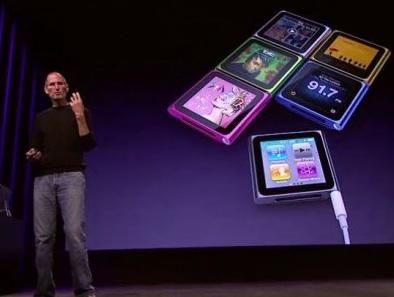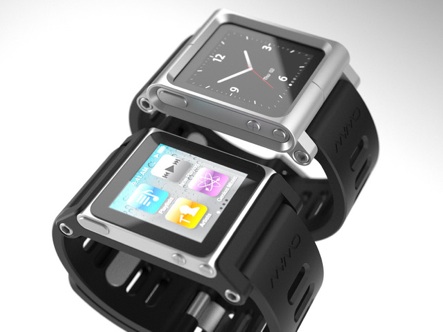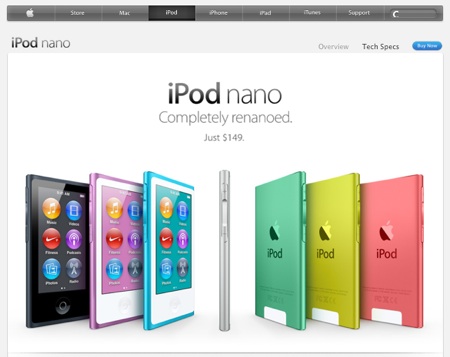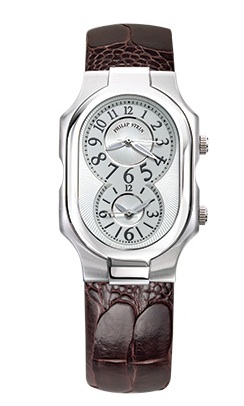Articles and News
WILL LUXURY CUSTOMERS SAY I WANT AN IWATCH? | March 06, 2013 (0 comments)

Cupertino, CA—Rumors of Apple entering the watch market have been swirling for some time, though the company remains officially mum on the subject. But this article on Bloomberg.com cites sources familiar with the company’s plans, who say the tech giant has about 100 people working on a watch project, and that it has filed at least 79 patent applications that include the word “wrist.” And, said the source, the device could be introduced as early as sometime this year.
Given Apple’s history of revolutionizing the way we use computers and consume music, and its luxury positioning in the technology arena, will the introduction of an iWatch upset the proverbial apple cart in the traditional luxury watch market?
That depends, say experts. Roberta Naas, a watch journalist and author of ATimelyPerspective.com, says other companies have tried in the past to create watches that incorporate phones and other types of Dick Tracy-esque functions, but so far without success.
Were they too far ahead of their time, or is a Dick Tracy watch simply not on the want list for luxury consumers?
“This iWatch might come to fruition since it has the backing of a mega-company, but whether or not it will sell depends on a lot of factors, including ease of use, retail price, and more,” said Naas. “But it won’t really impact the luxury watch market because true watch connoisseurs care about the craftsmanship that goes into making a fine timepiece; the mechanics and the haute horologerie features.”
Jim DeMattei, president of ViewPoint Showroom in New York—distributor of Philip Stein, Marvin, and GlamRock watches—agrees, but like most of the rest of the watch industry, he’s keeping a close eye on it.
“I don’t think it will have much appeal to the traditional watch person,” he told The Centurion. “It might pique a lot of interest among the generation that currently doesn’t wear a watch, but I don’t see watch aficionados giving up a traditional watch and going to an iWatch.”
But what it might do, say Naas and DeMattei, is encourage the cell phone generation to start wearing a watch, and that, they agree, is a good thing. The luxury watch industry is healthy now, but there could be trouble down the road.
DeMattei recently had a meeting with a company that tracks consumer culture. “It was a roomful of young tech-y guys in front of these huge monitors. Of 10 people in the room, only three were wearing a watch, and I was one of them,” he said. “We’re missing a whole generation of people who don’t wear watches.”
But, he said, as some of these consumers mature into their late 30s and start earning enough money to buy luxury watches, they could become interested in fine watches, and he’s already observed a group within this age bracket that see a luxury watch as a symbol of achievement.
Ariel Adams, author of ABlogToWatch.com, agrees with Naas that Apple, with its enormous resources and track record of creating things people never knew they needed, may be the company that finally succeeds where others have failed in creating a desirable smart watch.
“The square iPod Nano essentially was a watch. That was the first generation test model. Apple clearly wanted to see how it would evolve, what accessories people would make for it, and the features people would use most. One area that may have surprised Apple is that people used the Nano less for music, and more for other things (such as the time or photo viewing). Perhaps this was cheating, but it provided Apple with an immense and free marketing study on exactly what would make for an ideal iWatch product,” he wrote in an article on his blog.

The late Steve Jobs showing the square iPod Nano at its introduction. Image: Businessinsider.com
Indeed, he said, the first thing people did when the square Nano came out was try and strap it to their wrists. It spurred the creation of aftermarket straps, such as the LunaTik, available on Kickstarter.com or the DesignBoom image at the top of this page. The Nano also already has a choice of about 18 different watch dials available on the screen; one is shown in the image below and another also is shown at the top of this page.

The LunaTik strap holders were designed to fit a square iPod Nano. These have rubber straps, whereas the DesignBoom image at the top of this page shows a fabric strap. LunaTik image: Kickstarter.com.
Dick Tracy and Maxwell Smart were fantasy characters, but moving technology onto the body is a real trend, say futurists. Google, for example, is working on the introduction of a pair of glasses that is a mini-computer. Watches, meanwhile, evolved from the pocket to the wrist in the early 20th century, back to the pocket with the advent of cellphones, and now are poised for a return to the wrist. Adams concurs with Bloomberg’s assertion that rumors of the iWatch are probably true and that we’ll probably see one later this year.
The Nano, meanwhile, has been redesigned (again) to an oblong shape.

Form vs. function. The failed prior iterations of a smart watch clearly focused more on function than form. Most were clunky and not especially attractive. But Apple clearly knows how much design matters, and it’s only a matter of time (no pun intended) before they figure out how to fix the glitches that made the Nano impractical as a watch. Read Engadget.com’s review of the Nano worn as a watch and what the potential is for development of a purpose-built iWatch. (Hint: downloadable faces from iTunes and more.)
DeMattei says the early iterations of Teslar watches were very basic, as the inventors were focusing on the technology over the design. The technology is based on tapping into the natural frequencies of the human body to help neutralize the effects of electromagnetic frequencies in the environment from radio, TV, cellphones, and so on. Customers have reported feeling a heightened sense of relaxation and well-being with the watches, but their popularity only took off after Philip Stein partnered with the original creators and retooled the design.

Philip Stein watches rocketed to popularity only after a redesign. Here, one of the firm's signature styles.
Ugly won’t cut it, but DeMattei still thinks the driving force for an iWatch success is going to be functionality. He sees a potential iWatch customer as one who might currently wear an Ironman or other function-driven watch. And Adams says anything that's playful or colorful, such as the rubber or cloth straps that were developed for the colorful square Nano, are not sophisticated enough for a luxury connoisseur.
Adams agrees that functionality is uppermost, but once the functionality is met and people agree the concept is something they want, consumers--especially young consumers--gravitate toward the better-designed product.
So why do consumers suddenly seem to want a smart watch now, when they didn't before?
"The earlier versions weren't ready for prime time. They didn't work well enough, they had too many glitches, and consumers simply weren't willing to put up with their quirks," Adams told The Centurion. "[The technology] still isn't quite ready, but those were really not ready."
But ultimately, say the experts, it comes back to the proverbial rising tide, which DeMattei says portends only good things for the watch industry. The more people who wear a watch—of any kind—the more opportunity there is to transition them into a luxury watch down the road. And Adams says don't get hung up on the fact that younger people don't wear watches. He's got teens and 20-something subscribers on his blog, and he says there's still a fascination with mechanical watches that is all about the artistry, even among technology lovers. And something else that isn't going to change, either: basic human nature.
"The desire to have something as a status symbol or symbol of achievement is human nature. A watch is a societally approved place for a man to adorn, and who's to say that Rolex won't someday be making smart watches?"







